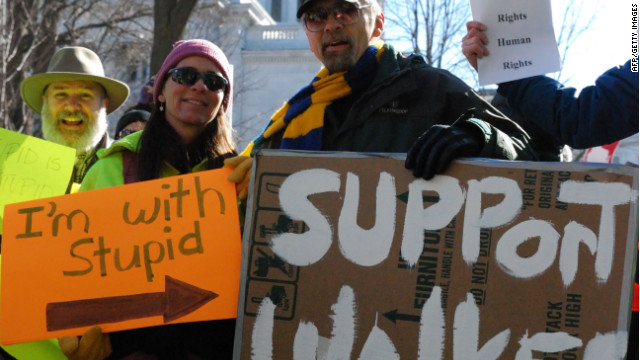not sure who exactly wrote this….
this article offers another great reason as to how politics became so divided. the term hyper partisanship is a good gauge of the increasingly volatile party system. in the article is goes into specifics on when and how the parties started to divide after a period of convergence. the issues brought up such as race gave a very good insight as to more specific reasons of the split. race and racial tension is very clearly a hot topic issue as of today and this article gave a very strong look as to where that stemmed from. it also talked about how during the cold war conflict and hyper tension between nations, our party system was more closely related and cooperating. this gives great reasoning as to when and how our political system ad parties finds importance in working together. relating to the nearing and scarily intense aggression between the United States and North Korea, the article hints toward a time of bi-partisanship. examining the closely related correlation of times of conflict and party cooperation helps formulate evidence for how it might change and when. lastly the article briefly touches on the effects of hyper-partisanship and how it creates difficulty in the making of decisions and efficiency of government.
hyper-partisanship
Beginning with the Civil Rights Movement in the 1960s, into the war in Vietnam, extending to the Watergate scandal, and into the 1980s, political partisanship morphed from what one might call “normal partisanship” (two political parties vying for power yet able to come together and bargain and compromise to solve problems) to a divisive form of hyper-partisanship, wherein the two parties became more polarized, bargaining and compromise became more difficult, and the “politics of personal destruction” replaced disagreements over policy matters. During this period, the Democrats moved to the left, and the Republicans moved to the right. The middle, or moderates, in each party shrunk, and the gulf between the parties increased, making governing more partisan and more difficult.
In the post-World War II era, Democrats and Republicans battled for control of elected offices and for control of the policy agenda. Bargaining was made possible because in foreign affairs, the Cold War brought – to a degree – both parties into a more cooperative and unified general agreement about whom the enemy was and what needed to be done to combat the spread of Communism. But the war in Vietnam put a dent into that consensus, and the parties began to divide over both foreign as well as domestic policy. A further divide between the parties came in the response to the Civil Rights movement, with the Democrats promoting equality (the Civil Rights Act, and the Voting Rights Act for example), while the Republicans generally opposed these civil rights steps. This led to the exodus of the Southern Democrats from the Democratic Party to the Republican Party. The once solid Democratic South became the solid Republican South. With the war in Vietnam the two parties split further over questions of national security. Then, with the scandal of Watergate, an “us versus them” attitude began to overtake partisan politics, and the two parties split further apart. By the 1980s, and the Reagan presidency, the two parties were deeply divided and moderates in both parties became an endangered species. By 2010 with the rise of Tea Party Republicans, a virulent strain of hyper-partisanship began to dominate the political process.
In Congress, moderates faded from power as they faded from office. In 1982, according to The National Journal vote rankings, there were 344 “moderates” in the House of Representatives (79%). By 1994 that number had dropped to 252, and by 2002 to 137. In 2011 there were only 16 Members who voted as “moderates,” and by 2012 that number had dropped to 11. This meant that routine business (e.g. extending the U.S. debt limit) became hot political potatoes, and on several occasions, the Republicans in Congress shut down the government. A politics of brinkmanship took center stage as the politics of bargaining and compromise all but died out.
This hyper-partisanship, first visible in the Congress, has now extended to average citizens who increasingly see the opposition party as dangerous and un-American. According to the Pew Research Center, negative perceptions of the opposing party became a central factor in participation, with majorities of both parties seeing the opposition in a highly negative light. Two countries: a Red and a Blue America, deeply divided, became the reality. In such a politicalatmosphere, bargaining and compromise are seen as caving in to the opposition, and elected officials are egged on in their hyper-partisanship. Even those legislators who might wish to reach across the aisle to bargain with the opposition party are afraid that they will be “primaried,” that is, they might face a well-financed opposition from their own party in the next primary election.
The consequence of this hyper-partisanship is to elevate the politics of brinksmanship to a new higher level, and makes doing the normal business of government more difficult. As each party demonizes the other, politics as usual becomes unusual politics.

Leave a comment